Édition Lebeer Hossmann (also Édition Lebeer-Hossmann Hamburg – Brussels) was a German-Belgian publisher of art publications, artist books, multiples and artist records. In addition to general publishing work in the art book and art catalog sector, it was dedicated to the promotion, publication, and distribution of artists' books and records, and, therefore, provided a platform for young artists who were experimenting with the then-new medium of artist books and records. The focus was on publications related to Fluxus. The works published here by Christian Boltanski, George Brecht, Marcel Broodthaers, Robert Filliou, Annette Messager, René Magritte, Dennis Oppenheim and Ben Vautier have become classics of the artist's book genre and are now represented in all major art collections. In the field of artists' records, the edition did pioneering work in publishing sound art, including works by Henning Christiansen, Philip Corner, Nam June Paik and Dieter Roth, which are now sought-after collector's items.
In addition to this pioneering and experimental work, the publishing house established a section with exhibition catalogs, artist monographs and theory series, which financed the experimental work as commercial commissions.
Édition Lebeer Hossmann was founded in 1972 by Irmelin Hossmann-Lebeer, Paul Lebeer and Herbert Hossmann, and officially ceased operations in 2024. Publications by Édition Lebeer Hossmann are regularly offered at auctions and by art (book) dealers. This website serves as an archive of the publisher's activities.
PAUL LEBEER
(*1924 Brussels, †1994 Brussels)
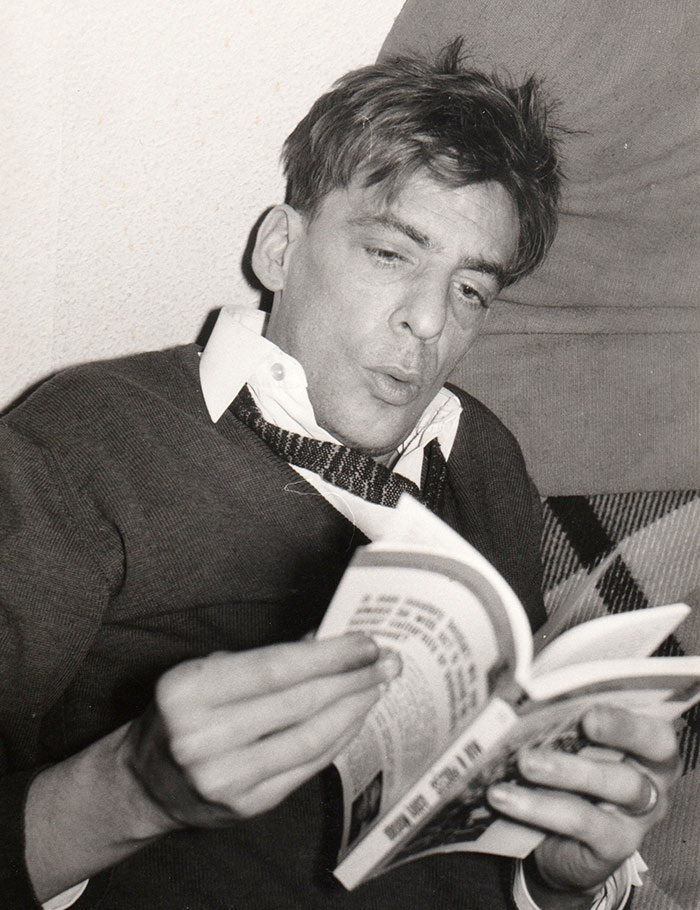 Paul Lebeer studied political science and journalism in Brussels. Before returning to Belgium in 1968 he had lived several years in Africa (1950s) and later in France (1960s). During his time in Leopoldville (Congo), he was involved in the fights for independence. Together with the Labrique couple, he was expelled for seditious political activities, whereupon they went to France together, where they founded a press agency dealing with African politics. He also worked as an author and editor for the French-language weekly magazine Jeune Afrique and contributed to the magazine Réalités. In Paris, he met Irmelin Hossmann, and they married in 1964. In 1966, he attended the first World Festival of Black Arts in Dakar. The following year, he obtained an interview with Michel Leiris himself, which has just been published by Éditions Sainte-Opportune (of which he was co-founder) (1).
Paul Lebeer studied political science and journalism in Brussels. Before returning to Belgium in 1968 he had lived several years in Africa (1950s) and later in France (1960s). During his time in Leopoldville (Congo), he was involved in the fights for independence. Together with the Labrique couple, he was expelled for seditious political activities, whereupon they went to France together, where they founded a press agency dealing with African politics. He also worked as an author and editor for the French-language weekly magazine Jeune Afrique and contributed to the magazine Réalités. In Paris, he met Irmelin Hossmann, and they married in 1964. In 1966, he attended the first World Festival of Black Arts in Dakar. The following year, he obtained an interview with Michel Leiris himself, which has just been published by Éditions Sainte-Opportune (of which he was co-founder) (1).
In the 1960s Paul Lebeer was also noted for his numerous translations, including one of Nietzsche published by Jean-Jacques Pauvert ("Le Cas Wagner et Nietzsche contre Wagner"). In 1968 he moved back to Brussels where he became successor to Éditions de la Connaissance (Ernst Goldschmidt) and together with his wife and brother-in-law, Herbert Hossmann, founded the publishing house Édition Lebeer Hossmann, focused on modern and contemporary art. Within that publishing activity, he had created an original collection, “Philosophiques,” which aimed to publish texts inspired by a wide variety of subjects, as long as they opened up new avenues of thought. This collection includes important texts by Fichte, Loreau, Clemens, Staiger, and Heidegger. It was in line with the latter that Paul Lebeer became, against the triumph of technical language, the defender of poetic language called upon to express reality in the broadest sense.
(1) «Au-delà d'un regard. Entretien sur l'art africain», Éditions Sainte-Opportune, 110 pp., 44 illustrations.
IRMELIN LEBEER-HOSSMANN
(*1934 Breslau, today Wrocław, Poland, † 2025 Brussels, Belgium)
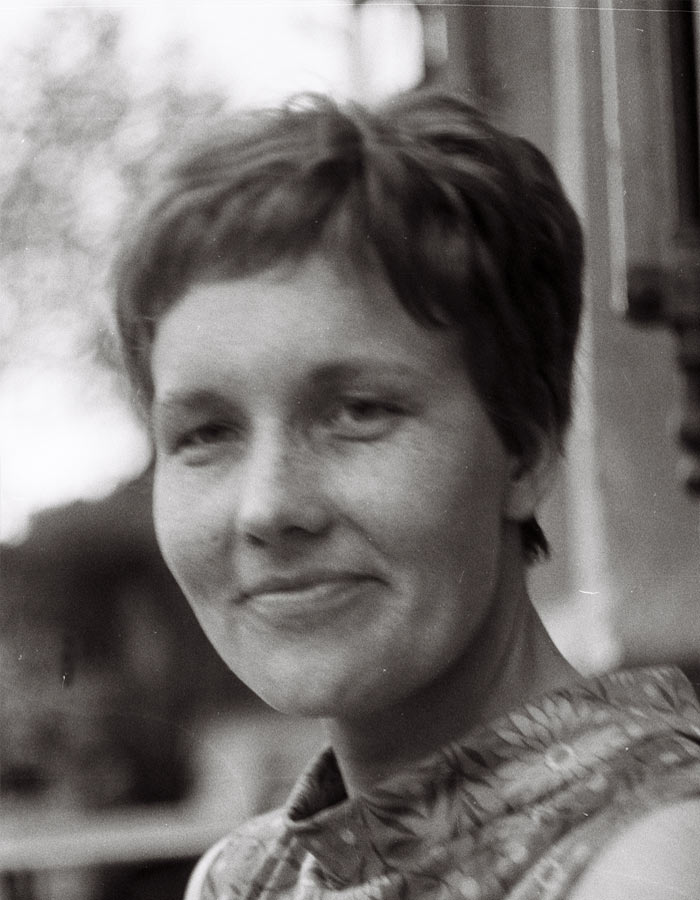 Irmelin Lebeer-Hossmann, née Hossmann, also known as Irmeline Lebeer, is a German journalist and publisher who specializes in contemporary art.
Irmelin Lebeer-Hossmann, née Hossmann, also known as Irmeline Lebeer, is a German journalist and publisher who specializes in contemporary art.
Irmemlin studied law in Göttingen, Freiburg, and Paris, and received her doctorate in international public law from the Sorbonne. After completing her studies, Irmelin Hossmann began working as a journalist and translator. She developed a particular interest in postcolonialism and African art and literature.(2) In 1959, she met Belgian journalist Paul Lebeer, who published articles on African art and criticism of Western civilization in the magazines Réalités and Jeune Afrique. She began working with Paul on various projects and published articles in the magazine Afrique. In 1964, she married him and took the double name Lebeer-Hossmann. The couple moved to Brussels in 1968, where they founded Édition Lebeer Hossmann Brussels Hamburg together with Herbert Hossmann in 1969/1972, which specialized in the then-new media of artist books, artist records, and multiples. Irmelin is best known for her interviews with artists from the 1960s to the 1980s. She was a member of the editorial board of the French art magazine Chroniques de l’art vivant for five years.
(2) Irmelin Hossmann: African Literature amp; the Universities. in: Africa Today. In: Africa Today. vol. 10, Nr. 7, 1963, S. 13–15
Irmelin Lebeer, L'Art ? C'est une meilleure idée!, Paris: Édition Jacqueline Chambon, 1997, ISBN-13: 978-2877111201.
See also Irmelin Lebeer-Hossman in German Wikipedia:
https://de.wikipedia.org/wiki/Irmelin_Lebeer-Hossmann
Irmelin Lebeer, Interview with Dieter Roth (two-part). In: Barbara Wien (Ed.), Collected Interviews, London: Edition Hansjörg Mayer, 2019, ISBN 978-0500970966, pp. 9-136.
HERBERT HOSSMANN
(*1942 Breslau, today Wrocław, Poland, † 2024 Celle, Germany)
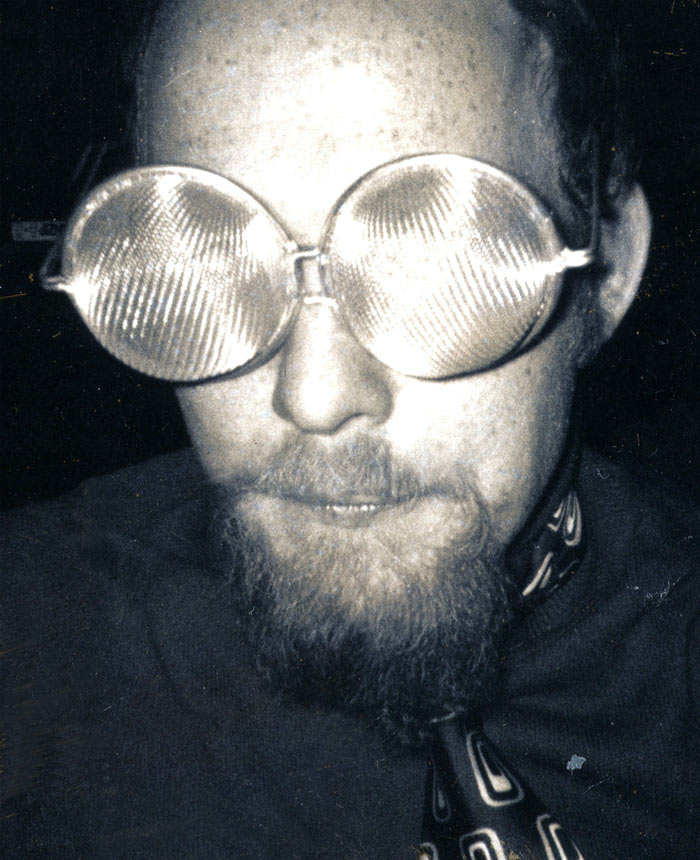 Herbert Hossmann was a German administrative lawyer, publisher, and founder of the art book publisher Édition Lebeer Hossmann, as well as curator and executor of Anna Oppermann's estate. He lived in Hamburg and Celle (Lower Saxony).
Herbert Hossmann was a German administrative lawyer, publisher, and founder of the art book publisher Édition Lebeer Hossmann, as well as curator and executor of Anna Oppermann's estate. He lived in Hamburg and Celle (Lower Saxony).
In addition to his work at the Hamburg Ministry for Science (1966–2008), Herbert was involved in local cultural policy, working to improve production conditions for artists, he was co-founder of the production gallery Vorsetzen (1986), and also served as co-curator for some legendary events (Peace Biennal, 1985; Hermit? Researcher? Social worker? The changing self-image of artists who, in 1979, Kampnagel Performance Festival, 1984).
From 1974 to 1993, he lived with the artist Anna Oppermann and, after her death, managed her estate together with different partners. As co-founder of the Édition Lebeer-Hossmann, he was primarily concerned with the German-speaking artists of the édition (Dieter Roth, Hanne Darboven, Jochen Gerz, Anna Oppermann) and had a particular interest in producing experimental Vinyls (Nam June Paik, Dieter Roth, Henning Christiansen, Hermann Nitsch). Since 2000, he was married to artist Cornelia Sollfrank.
See also Herbert Hossmann in German Wikipedia:
https://de.wikipedia.org/wiki/Herbert_Hossmann
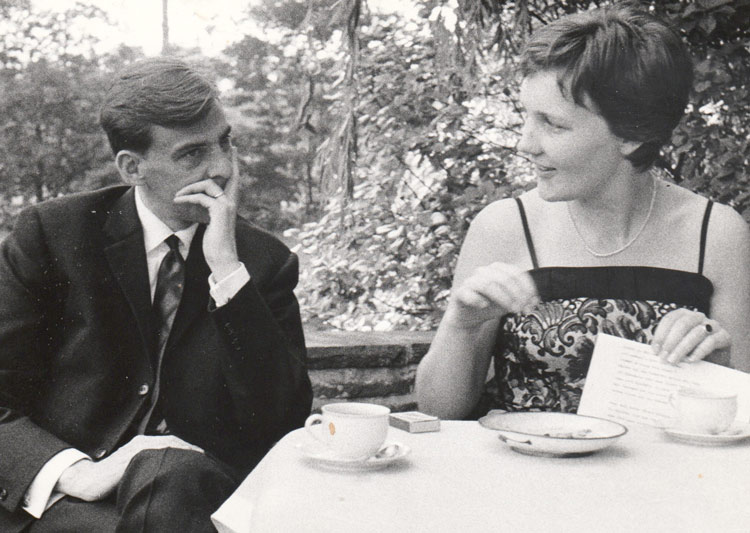
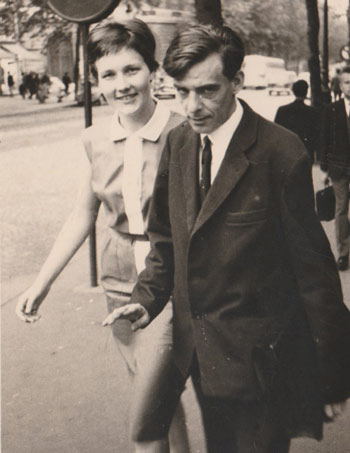
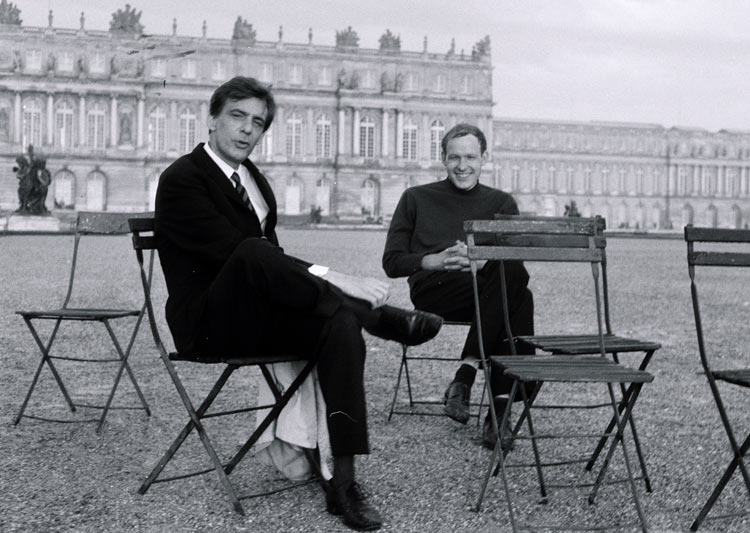
In addition to this pioneering and experimental work, the publishing house established a section with exhibition catalogs, artist monographs and theory series, which financed the experimental work as commercial commissions.
Édition Lebeer Hossmann was founded in 1972 by Irmelin Hossmann-Lebeer, Paul Lebeer and Herbert Hossmann, and officially ceased operations in 2024. Publications by Édition Lebeer Hossmann are regularly offered at auctions and by art (book) dealers. This website serves as an archive of the publisher's activities.
PAUL LEBEER
(*1924 Brussels, †1994 Brussels)
 Paul Lebeer studied political science and journalism in Brussels. Before returning to Belgium in 1968 he had lived several years in Africa (1950s) and later in France (1960s). During his time in Leopoldville (Congo), he was involved in the fights for independence. Together with the Labrique couple, he was expelled for seditious political activities, whereupon they went to France together, where they founded a press agency dealing with African politics. He also worked as an author and editor for the French-language weekly magazine Jeune Afrique and contributed to the magazine Réalités. In Paris, he met Irmelin Hossmann, and they married in 1964. In 1966, he attended the first World Festival of Black Arts in Dakar. The following year, he obtained an interview with Michel Leiris himself, which has just been published by Éditions Sainte-Opportune (of which he was co-founder) (1).
Paul Lebeer studied political science and journalism in Brussels. Before returning to Belgium in 1968 he had lived several years in Africa (1950s) and later in France (1960s). During his time in Leopoldville (Congo), he was involved in the fights for independence. Together with the Labrique couple, he was expelled for seditious political activities, whereupon they went to France together, where they founded a press agency dealing with African politics. He also worked as an author and editor for the French-language weekly magazine Jeune Afrique and contributed to the magazine Réalités. In Paris, he met Irmelin Hossmann, and they married in 1964. In 1966, he attended the first World Festival of Black Arts in Dakar. The following year, he obtained an interview with Michel Leiris himself, which has just been published by Éditions Sainte-Opportune (of which he was co-founder) (1).
In the 1960s Paul Lebeer was also noted for his numerous translations, including one of Nietzsche published by Jean-Jacques Pauvert ("Le Cas Wagner et Nietzsche contre Wagner"). In 1968 he moved back to Brussels where he became successor to Éditions de la Connaissance (Ernst Goldschmidt) and together with his wife and brother-in-law, Herbert Hossmann, founded the publishing house Édition Lebeer Hossmann, focused on modern and contemporary art. Within that publishing activity, he had created an original collection, “Philosophiques,” which aimed to publish texts inspired by a wide variety of subjects, as long as they opened up new avenues of thought. This collection includes important texts by Fichte, Loreau, Clemens, Staiger, and Heidegger. It was in line with the latter that Paul Lebeer became, against the triumph of technical language, the defender of poetic language called upon to express reality in the broadest sense.
(1) «Au-delà d'un regard. Entretien sur l'art africain», Éditions Sainte-Opportune, 110 pp., 44 illustrations.
IRMELIN LEBEER-HOSSMANN
(*1934 Breslau, today Wrocław, Poland, † 2025 Brussels, Belgium)
 Irmelin Lebeer-Hossmann, née Hossmann, also known as Irmeline Lebeer, is a German journalist and publisher who specializes in contemporary art.
Irmelin Lebeer-Hossmann, née Hossmann, also known as Irmeline Lebeer, is a German journalist and publisher who specializes in contemporary art.
Irmemlin studied law in Göttingen, Freiburg, and Paris, and received her doctorate in international public law from the Sorbonne. After completing her studies, Irmelin Hossmann began working as a journalist and translator. She developed a particular interest in postcolonialism and African art and literature.(2) In 1959, she met Belgian journalist Paul Lebeer, who published articles on African art and criticism of Western civilization in the magazines Réalités and Jeune Afrique. She began working with Paul on various projects and published articles in the magazine Afrique. In 1964, she married him and took the double name Lebeer-Hossmann. The couple moved to Brussels in 1968, where they founded Édition Lebeer Hossmann Brussels Hamburg together with Herbert Hossmann in 1969/1972, which specialized in the then-new media of artist books, artist records, and multiples. Irmelin is best known for her interviews with artists from the 1960s to the 1980s. She was a member of the editorial board of the French art magazine Chroniques de l’art vivant for five years.
(2) Irmelin Hossmann: African Literature amp; the Universities. in: Africa Today. In: Africa Today. vol. 10, Nr. 7, 1963, S. 13–15
Irmelin Lebeer, L'Art ? C'est une meilleure idée!, Paris: Édition Jacqueline Chambon, 1997, ISBN-13: 978-2877111201.
See also Irmelin Lebeer-Hossman in German Wikipedia:
https://de.wikipedia.org/wiki/Irmelin_Lebeer-Hossmann
Irmelin Lebeer, Interview with Dieter Roth (two-part). In: Barbara Wien (Ed.), Collected Interviews, London: Edition Hansjörg Mayer, 2019, ISBN 978-0500970966, pp. 9-136.
HERBERT HOSSMANN
(*1942 Breslau, today Wrocław, Poland, † 2024 Celle, Germany)
 Herbert Hossmann was a German administrative lawyer, publisher, and founder of the art book publisher Édition Lebeer Hossmann, as well as curator and executor of Anna Oppermann's estate. He lived in Hamburg and Celle (Lower Saxony).
Herbert Hossmann was a German administrative lawyer, publisher, and founder of the art book publisher Édition Lebeer Hossmann, as well as curator and executor of Anna Oppermann's estate. He lived in Hamburg and Celle (Lower Saxony).
In addition to his work at the Hamburg Ministry for Science (1966–2008), Herbert was involved in local cultural policy, working to improve production conditions for artists, he was co-founder of the production gallery Vorsetzen (1986), and also served as co-curator for some legendary events (Peace Biennal, 1985; Hermit? Researcher? Social worker? The changing self-image of artists who, in 1979, Kampnagel Performance Festival, 1984).
From 1974 to 1993, he lived with the artist Anna Oppermann and, after her death, managed her estate together with different partners. As co-founder of the Édition Lebeer-Hossmann, he was primarily concerned with the German-speaking artists of the édition (Dieter Roth, Hanne Darboven, Jochen Gerz, Anna Oppermann) and had a particular interest in producing experimental Vinyls (Nam June Paik, Dieter Roth, Henning Christiansen, Hermann Nitsch). Since 2000, he was married to artist Cornelia Sollfrank.
See also Herbert Hossmann in German Wikipedia:
https://de.wikipedia.org/wiki/Herbert_Hossmann



